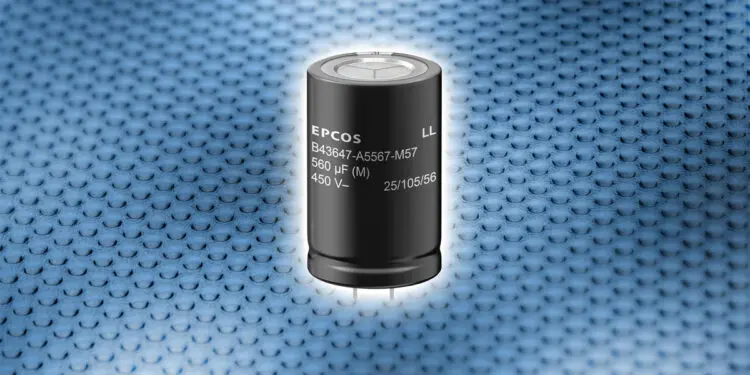TDK Corporation presents the new EPCOS aluminum electrolytic capacitor series B43647* with snap-in terminals. Thanks to their outstandingly high CV product, they are ideal for highly compact solutions in power electronics.
The capacitors are designed for a maximum operating temperature of 105 °C; at a rated voltage of 450 V DC and maximum ripple current, they reach a useful life of 2000 h. A capacitance range from 120 µF to 1000 µF is offered in case sizes ranging from 22 mm x 25 mm to 35 mm x 55 mm. Another special feature is the high ripple current capability up to 7.22 A (100 Hz, 60 °C).
Due to their high level of reliability, these capacitors are well suited for use in power supplies for servers, telecommunications and industrial applications, as well as UPS systems, medical devices, photovoltaic inverters and frequency converters. With their robustness in relation to fast charging and discharging cycles, the high requirements in servo drive applications are fulfilled.
Main applications
- Power supplies for servers, telecommunications and industrial applications
- UPS systems
- Medical devices
- Photovoltaic inverters
- Frequency converters
- Servo drive applications
Main features and benefits
- High CV product
- Compact dimensions
- High ripple current capability
- High reliability
- High level of robustness in relation to fast charging and discharging cycles































